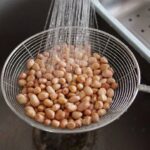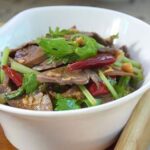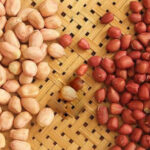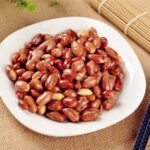Peanuts are a versatile snack, often used as a bar snack, mixed with various types of salads, or as a casual snack. Roasting peanuts is not a difficult task. However, many people encounter issues with their roasted peanuts becoming soggy quickly and developing a rancid oil smell after a few days. To address this problem, you can apply the following peanut roasting tips.
Selecting the Best Peanuts
Opt for peanuts with round, plump kernels, taut and smooth skins, and dry and consistent sizes. Remove any shriveled, infested, or moldy peanuts to ensure the quality of the snack and the health of the consumers.
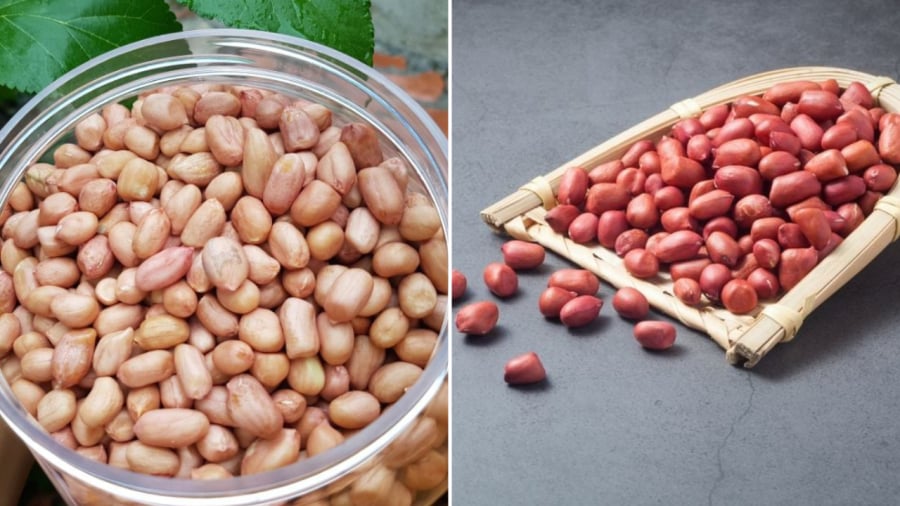
Washing the Peanuts
Contrary to common practice, it is not advisable to roast peanuts immediately after purchase. Roasting untreated peanuts may cause them to release oil, resulting in soggy peanuts with an unpleasant smell. It is recommended to soak the peanuts in water and then gently rinse them. Reputable peanut roasters in Hanoi suggest either soaking the peanuts or pouring boiling water over them before roasting.
Washing the peanuts not only removes external dirt but also reduces the bitterness and raw smell of the peanuts. Roasting washed peanuts ensures even cooking, resulting in crunchy and fragrant peanuts even after some time. Soaking the peanuts in water before roasting can prevent the outer shell from burning while the inner part remains uncooked.
Additionally, experienced chefs may opt to add a small amount of water to the pan during the initial roasting stage. This technique allows the peanuts to cook slowly and prevents burning.
Roasting the Peanuts
The traditional method of roasting peanuts involves stirring them in a hot pan. Ensure the pan is completely dry, turn the heat to low, and then add the peanuts. Maintaining an even temperature and moderate heat helps the peanuts cook evenly, ensuring they remain dry and odor-free even after a few days.
During the roasting process, adding a small amount of salt can help the peanuts cook evenly, become crisp faster, and enhance their flavor.
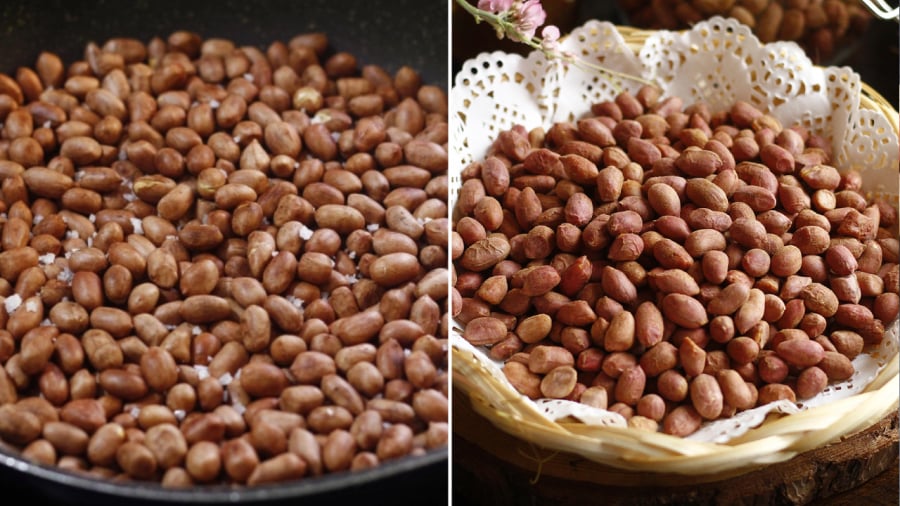
Alternatively, an air fryer can be used to cook the peanuts. Spread the peanuts evenly on the air fryer tray and set the temperature to 150 degrees Celsius for 10 minutes. Subsequently, lower the temperature to 90 degrees Celsius and continue cooking for 30 minutes. If you wish to expedite the process, increase the temperature to 160 degrees Celsius and cook for 5-10 minutes. Remember to open the air fryer occasionally and stir the peanuts to ensure even cooking. A similar approach can be applied when using an oven.
Peanuts can also be roasted in a microwave. However, it is crucial to ensure the peanuts are completely dry before placing them in the microwave. Spread the peanuts evenly on a plate and put them in the microwave. Heat them for approximately one minute, then open the microwave and stir the peanuts to ensure even cooking. Repeat this process about two to three times, aiming for a total cooking time of slightly over three minutes. When the peanut shells start to crack and pop, they are ready. At this point, leave the peanuts in the microwave for an additional two minutes (without heating) to allow them to cook more thoroughly without burning.
Resting the Peanuts
After roasting the peanuts, avoid transferring them directly into a jar or consuming them immediately. Instead, wrap the hot peanuts in clean paper and then place them in a clean cloth to absorb any residual moisture.
If you wish to make flavored peanuts, mix the hot roasted peanuts with flavorings of your choice before wrapping them in paper and resting them.
Let the peanuts rest for about an hour, and then transfer them to a jar and seal it tightly for later consumption.

























